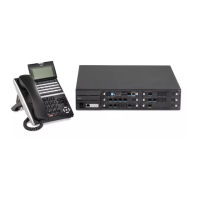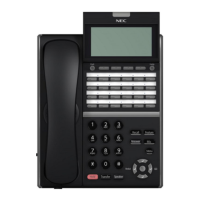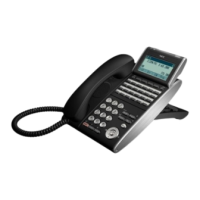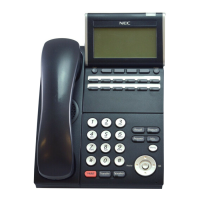Issue 2.0
5-14 Network Design Considerations
To calculate the maximum DSPs required:
The manual calculations listed below are used in the UNIVERGE SV9100.
Non-Peer-to-Peer Mode (Program15-05-50=0):
It is easy to calculate the maximum number of DSPs for a system that is not
peer-to-peer. This is a simple addition of:
VoIP extensions (VoIPE) + VoIP trunks (VoIPT)
Combine the resource figures:
Combine the (extension resource figure x DSPs required for extensions) + (trunk
resource figure x DSPs required for trunks) equals the total card resource required.
nTotalCardResourceRequired = (nExtCardResourceFactor x
nDSPsForExt)+(nTrkCardResourceFactor x nDSPsForTrk)
4
SECTION 7 QUALITY OF SERVICE (QOS) IMPLEMENTATION
Section 2.2 Voice Quality Improvements on page 5-3 discusses some of the
problems associated with voice quality. This section describes how QoS can be
implemented on data networks to provide the “best case” for VoIP traffic.
Not all network hardware supports QoS and each manufacturer has their own
methods of implementing QoS. The explanations below are as generic as possible.
The installer/maintainer of the data network should be familiar with the QoS
characteristics of their equipment and should be able to configure the equipment
accordingly.
Quality of Service is commonly used to describe the actual implementation of
prioritization on network hardware. This prioritization (at Layer 2 and Layer 3 of the
OSI model) is described in Figure 5-1 Layer 2 Diagram (802.1Q) on page 5-4.
7.1 Prioritization
When data is transmitted through a network, bottlenecks can occur causing the
available bandwidth to be reduced or the data to increase. This impacts the
packet delivery.
Consider data communication between the two computers shown in the diagram
Figure 5-1 Layer 2 Diagram (802.1Q). The Hosts can transmit data at 100 Mbps.
When a packet from Host A, destined for Host B, reaches the router, the available
bandwidth is reduced to 256Kbps and the packet flow must be reduced. Figure
5-3 Network Bottleneck Example shows a diagram of this condition.
4. This figure is different only to the number of required DSPs if the CODECS used are the faster ones. All other
CODECS are a multiplication factor of 1 thus not effecting the calculation.
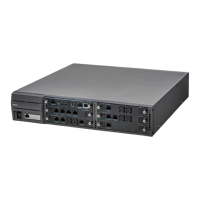
